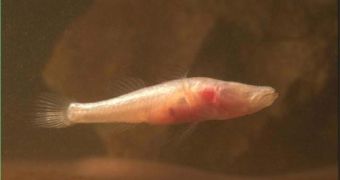In a recent investigation of caves, caverns and underground water streams, conducted in the Australian Outback, researchers have discovered no less than 850 new animal species, ranging from fish and insects to crustaceans and beetles. Most of the newly discovered creatures were pale, a natural adaptation to their lightless environment, and also blind, as eyes would do them little good in complete darkness. In spite of the large number of diverse species that was recently found, experts believe that it represents only about a fifth of the large variety of creatures still to be discovered in Australia.
“What we've found is that you don't have to go searching in the depths of the ocean to discover new species of invertebrate animals – you just have to look in your own backyard,” University of Adelaide in Australia evolutionary biologist and researcher Andy Austin explains, quoted by LiveScience. Worldwide, naturalists and biologists believe, only a small fraction of animal and plant species has thus far been uncovered. They say that many more species exist at remote locations that explorers have yet to reach to this day. The recent finds are a good argument to back up this claim.
Less than 500 of the new creatures were thus far named by the study team. Generally, they are referred to as “stygofauna,” a term that is intended for the ones that live in caves. For the species in micro-caverns and underground water streams, the official term is that of “troglofauna.” A recently released report shows that over 75 percent of all stygofauna is represented by small crustaceans. Conversely, 50 percent of the new troglofauna species have been arachnids, the scientists report.
“Virtually all are blind and completely lack eyes, and lack pigment, so they are pale or white in color. The insects in caves often have long legs and antennae – most sense vibration and use chemical senses, as they cannot see in the pitch black,” Austin adds. “Central and southern Australia was a much wetter place 15 million years ago when there was a flourishing diversity of invertebrate fauna living on the surface. But the continent became drier, a process that last until about 1 to 2 million years ago, resulting in our current arid environment. Species took refuge in isolated favorable habitats, such as in underground waters and micro-caverns, where they survived and evolved in isolation from each other.”

 14 DAY TRIAL //
14 DAY TRIAL //